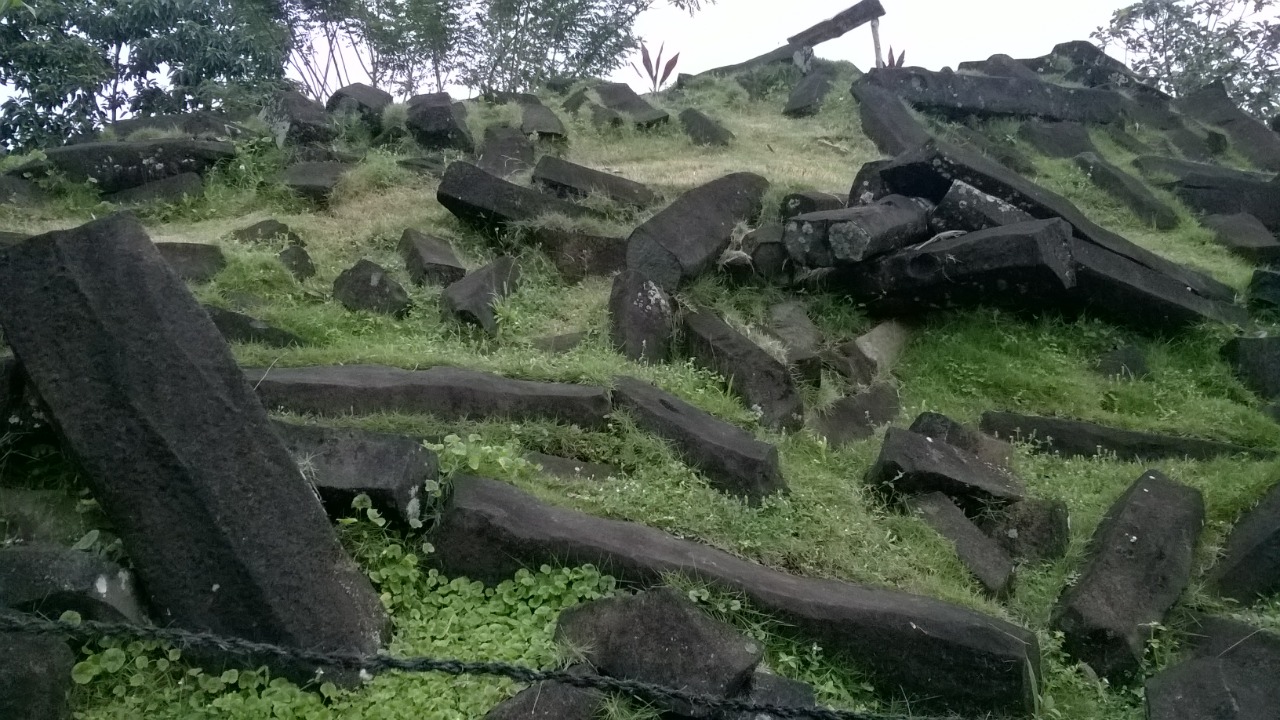
Archaeologists have recently challenged the long-held belief that the Gunung Padang site in Indonesia is the world’s oldest pyramid, constructed 25,000 years ago. Instead, they propose that this site is a natural geological formation, shaped by volcanic activity and erosion rather than human hands. This revelation significantly alters our understanding of early human engineering in Southeast Asia, suggesting that what was once thought to be a monumental human achievement is, in fact, a natural wonder.
Discovery of Gunung Padang
The Gunung Padang site, located in West Java, Indonesia, first captured the attention of researchers in the 1970s. Local researchers noted its terraced hills, which resembled a pyramid, and speculated that it might be a megalithic structure. Early 20th-century surveys identified layered basalt formations, leading to initial hypotheses that the site had been modified by humans around 9,000 years ago. These claims were later expanded to suggest a construction date of 25,000 years ago, based on carbon dating of soil layers. Despite these assertions, the site’s elevation at over 885 meters and its cultural significance to the Sunda people have long been acknowledged, with the hill revered as sacred without attributing artificial origins.
Further exploration in the early 2000s intensified interest in Gunung Padang. Researchers proposed that the site’s layered structure was evidence of ancient human construction. However, these claims have been met with skepticism, as more recent studies suggest that the site’s appearance is due to natural geological processes. The site’s significance to the Sunda people remains intact, but the narrative of its origins is shifting from human ingenuity to natural formation.
Controversial Age Claims
In 2018, Indonesian geologist Danny Hilman Natawidjaja conducted a study using radiocarbon dating on organic material found in soil samples at Gunung Padang. His findings suggested that construction phases began 25,000 years ago, predating Egypt’s pyramids by millennia. However, subsequent dating efforts in 2023 refined this timeline, indicating that the upper layers of the site date to 4,000–6,000 years ago, while deeper strata lack evidence of human tools or artifacts from 25,000 years ago. This discrepancy has fueled debate over the accuracy of the dating methods used, with critics arguing that organic inclusions in volcanic rock could skew dates to reflect natural deposition rather than human activity.
The debate over Gunung Padang’s age highlights the challenges of interpreting ancient sites. While some researchers continue to support the idea of early human construction, the lack of definitive evidence from deeper layers casts doubt on these claims. The controversy underscores the importance of rigorous scientific methods in archaeology and the need for ongoing research to clarify the site’s true origins.
Evidence of Natural Formation
Recent geophysical surveys conducted in 2023 using ground-penetrating radar have provided compelling evidence that Gunung Padang is a natural formation. These surveys revealed no artificial chambers or cut stones beneath the site, instead showing continuous lava flows consistent with the region’s ancient volcanic history. Soil core analyses further support this view, indicating that the “pyramid” structure formed from uplifted andesite bedrock shaped by erosion over 20,000 years, with minimal human intervention limited to surface terraces added much later.
Seismic data from recent expeditions have also detected natural fault lines and sediment layers, ruling out engineered foundations and supporting the site’s origin as a prehistoric volcano rather than a built monument. These findings challenge previous assertions of human construction and suggest that Gunung Padang’s pyramid-like appearance is a result of natural geological processes. This shift in understanding emphasizes the dynamic nature of archaeological research and the need to continually reassess historical narratives in light of new evidence.
Expert Reactions and Implications
Archaeologists like Bill Farley from the Australian National University have reviewed the radar images and concluded that the site shows “no signs of human construction.” Farley emphasizes Gunung Padang’s role as a natural landmark, rather than a human-made structure. This perspective aligns with the broader impact on prehistoric archaeology, as retracting the 25,000-year human-built claim shifts focus to genuine early sites like Göbekli Tepe in Turkey, which is dated to 11,000 years ago.
The implications of these findings extend beyond Gunung Padang, prompting calls for further excavation and study. Experts are stunned by subsurface scans revealing only geological anomalies, urging preservation to avoid pseudoscientific narratives. As researchers continue to explore the site’s origins, the debate over Gunung Padang serves as a reminder of the complexities involved in interpreting ancient history and the importance of evidence-based conclusions.
Overall, the reassessment of Gunung Padang’s origins highlights the evolving nature of archaeological research and the need for ongoing investigation to uncover the true history of ancient sites. As new technologies and methods become available, our understanding of the past will continue to be refined, offering fresh insights into the origins and development of human civilization.
More from MorningOverview